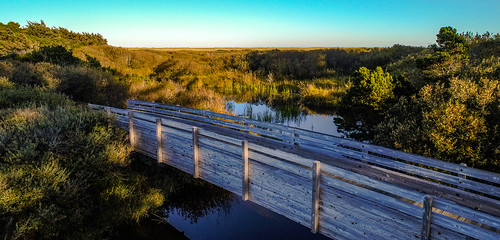According to court documents, Farmers Grain, which opened in January 2013 and is headquartered in Nyssa, Ore., has $14 million in assets but as much as $23.8 million in liabilities.
That means some farmers and other ag-related businesses won’t be paid the full amount they are owed by Farmers Grain, which had gross revenues of $31.2 million in 2016 and $30.6 million in 2015.
The company’s financial struggles came as startling news to many of its creditors, including Payette, Idaho, farmer Bruce Cruickshank, who found out about them only after receiving a notice from bankruptcy court.
He was owed $137,000 on the date of the bankruptcy filing but has been paid all except $30,000.
Cruickshank said he’ll make it, as will most of the farmers who are also owed money. But the loss still hurts.
“We’ll survive, but it’s just like (anybody): if you take a $30,000 hit, it sure as hell ain’t going to make you feel very good,” he said.
He’s not sure how much of the remaining $30,000 that he’s owed he will actually see. “We’ll get something but it might be 10 cents on the dollar.”
Some Farmers Grain creditors are owed a lot more than Cruickshank. Court filings show many are owed several hundred thousand dollars and a few more than $1 million.
“A lot of my friends and neighbors have been hung out pretty bad,” said Ontario, Ore., farmer Bruce Corn, who sold corn to Farmers Grain but is not owed money by the company. “There are some people out there who are owed a lot of money.”
Malheur County Onion Growers Association President Paul Skeen, who hauled a small amount of wheat to the company this year but is not owed money, said two of his neighbors are owed $850,000 between them.
“It’s terrible,” he said of the company’s collapse. “It’s devastating.”
Jensen Farms in Vale, Ore., was owed $176,000 at the time of the original bankruptcy filing but was fortunate in that it delivered 1,000 tons of corn to Farmers Grain the day before the company declared bankruptcy and ended up getting paid the full amount it was owed.
“We were lucky, you could say that,” said co-owner Sheri Jensen.
However, the Jensen farm, like many others in the region, face a looming problem related to the bankruptcy that could end up costing them a significant amount of money.
Farmers Grain had contracted for tens of thousands of corn acres with local farmers, but those contracts are now void.
With harvest coming within the next few months, much of that corn has no place to go and no one to market it.
“There are a ton of farmers in the area scrambling trying to find out what to do with their corn,” Jensen said. “It’s not a pretty picture.”
The Jensens have on-site storage for their corn, but other farmers don’t, and Farmers Grain had the largest storage capacity in the region by far.
“The sheer volume of the corn means it will be hard for everyone to find a place to go with it,” Corn said. “Finding the storage and a place to market the corn is going to be a real problem this fall.”
Because the corn contracts are no longer valid, those farmers stand to lose a lot of money because prices have dropped more than $30 a ton since the contracts were signed, Cruickshank said.
He said a friend had 400 acres of corn contracted with Farmers Grain and if that corn is sold at today’s prices, he will lose about $280 an acre and more than $100,000 total.
Cruickshank had 130 acres of corn under contract with the company and would lose a similar amount per acre.
“That’s the tip of the iceberg with what (happened) with everybody,” he said.
Growers in the area said Farmers Grain was an excellent company to work with and many of them knew and liked Galen Jantz, 47, who managed the company and had a 40 percent interest in it, according to court documents.
Court documents show the company sought Chapter 11 protection after Rabo AgriFinance declared a default on a revolving line of credit to Farmers Grain and called the entire $8 million balance due.
The company asked the court for relief from “Rabo’s continued pursuit of the Jantz loans and property owned by (the) Jantz family.”
“This action by Rabo was one of the precipitating events leading to Farmers Grain filing its bankruptcy petition,” Farmers Grain stated in a court document. “Continued pursuit of the Jantz loans and collateral will severely impact the Chapter 11 proceedings and frustrate debtor’s ability to successfully reorganize.”
A June 15 letter from Farmers Grain authored by Jantz and sent to growers expressed hope the company could regain its financial stability and continue doing business.
But the court converted the Chapter 11 bankruptcy to a Chapter 7 liquidation filing on Aug. 15 after Rabo AgriFinance, in an Aug. 3 court filing, argued that Farmers Grain was losing too much money to recover.
An auction of the businesses’ assets has been scheduled for Oct. 27 beginning at 10 a.m. at the Farmers Grain facility in Nyssa.
In the Aug. 3 filing, Rabo attorneys said Farmers Grain assets “that secure repayment of (the company’s) loan appear to have diminished by almost $1.5 million in the two weeks after the bankruptcy filing.”
The company’s monthly operating report for the period ending May 31 showed further financial decline, Rabo added. In the six weeks that Farmers Grain had been protected by Chapter 11, Rabo said, its assets decreased by $3 million while its liabilities only decreased by $514,000.
While Farmers Grain claimed its total assets could generate about $20 million, a Rabo appraisal placed that value closer to $9 million, according to court records.
Rabo spokeswoman Sarah Kolell said the company does not anticipate being paid back in full from the liquidation of Farmers Grain’s assets.
“While Rabo does anticipate receiving some value from the liquidation of its collateral, we also anticipate that there will be a substantial deficiency remaining once the Farmers Grain case is concluded,” she told Capital Press in an email.
Complicating matters, Jantz suffered what Rabo, in court filings, said it was told was a mental breakdown and had left town, abandoning his farming and personal operations, as well as Farmers Grain.
As a result, the court appointed Steve Neighbors as a conservator to handle Jantz’s financial affairs. He is certified as a business turnaround specialist by the Turnaround Management Association.
Neighbors told Capital Press that according to Jantz’s family, he began having coherence problems in the past year and there is a history of early onset dementia in the family.
“He would be talking and babbling at times,” Neighbors said. “He was making a lot of irrational statements and decisions in his last year at Farmers Grain is what his family told me.”
Neighbors said Jantz became depressed as a result of the mental strain he was under. “He felt he had to get away from everything to prevent himself from being suicidal,” Neighbors said.
Jantz and his family of four are currently staying with a relative in another state, Neighbors said. “He had to get distance. He went away to get healthy.”
The Capital Press attempted to contact Jantz by leaving messages at several phone numbers connected with him, including at Farmers Grain’s main telephone number at its headquarters in Nyssa. None of the calls were returned. Other numbers, including his home number in Vale, Ore., were disconnected.
Neighbors said Jantz feels he let his community down and voluntarily turned over $8 million in personal assets to the court and asked Neighbors to make sure creditors are made as whole as possible and that no one creditor seizes everything.
“He asked me to make it as right as I can to all of his creditors,” Neighbors said. “I’m trying to make everything as transparent as I can to all the creditors so they have their fair shot at whatever” is owed them.
Neighbors said he has authorized $3,000 a month for eight months for Jantz to take care of his family during the bankruptcy proceeding.
“That’s all Mr. Jantz wanted,” he said. “He wanted everything else to go to his creditors.”
Neighbors said he believes a couple of main factors led to Farmers Grain’s financial collapse, including that some accounting and record-keeping that should have been done, wasn’t.
“I think those complexities went beyond his ... training,” he said.
“He didn’t understand his costs fully and didn’t understand the full implications of cash flow,” Neighbors added.
Some important business decisions that should have been made in the past year weren’t because of the mental strain Jantz was under, he said.
For many farmers affected by the company’s bankruptcy, their hope now is that another business will step in and take its place.
Corn, the farmer, said Farmers Grain was a good business for area farmers while it was running “but when it went bad, it went bad in a hurry. My hope is someone will buy it and make it work.”
Kolell, the Rabo spokeswoman, said what the liquidation of the Farmers Grain assets will look like is an open question.
“If someone wanted to step in and purchase all real and personal property assets and reopen the business, Rabo would be supportive of that,” she said.


